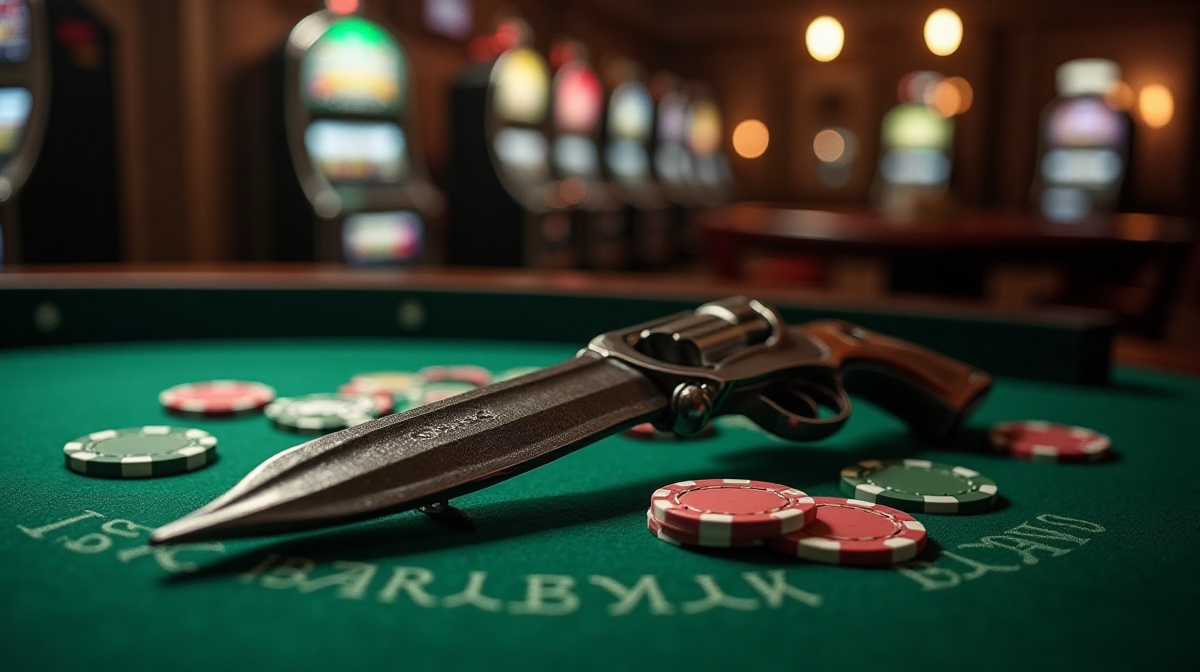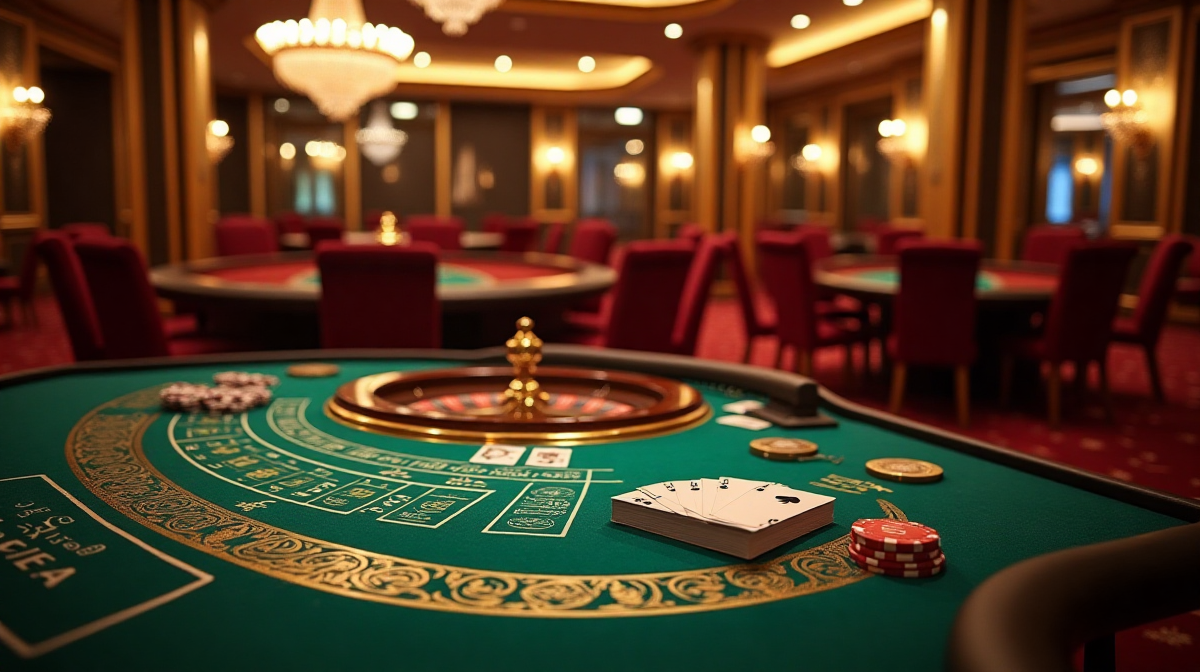Beyond the Table: What Is a Blackjack Weapon?
What Comes to Mind When You Hear “Blackjack”?
The word “blackjack” immediately conjures images of casino tables, the thrill of hitting 21, and perhaps even the excitement of placing an i lot bet. Many are familiar with i lot bet as a modern form of lottery, and the i lot bet app download is a common search for those seeking convenient access to games of chance. But the term “blackjack” has a far more complex history, one that extends far beyond the felt of a casino. It’s a history rooted in self-defense, law enforcement, and even outright criminality.
Shifting Focus: Blackjack as a Weapon - The Unexpected History
While we associate “blackjack” with a card game, and even explore options like what is blackjack strategy to improve our odds, the original “blackjack” was a very different thing altogether. It wasn’t about cards, but a weapon – a surprisingly effective and historically significant one. This article delves into the world of the blackjack weapon, exploring its origins, evolution, legality, and modern relevance.
Article Scope: Defining the Weapon, History, Legality & Modern Relevance
We’ll unpack the physical characteristics of this often-misunderstood tool, trace its journey through time, examine the legal landscape surrounding its ownership and use, and assess its place in the modern world. We’ll also touch upon the darker side of the question: what is a blackjack weapon truly capable of, and what are the risks associated with it?
Defining the Blackjack Weapon
What is a Blackjack?
A blackjack, in its weaponized form, is essentially a club or cosh, designed to deliver a concentrated impact. Traditionally, it consists of a handle (often made of wood, metal, or plastic) attached to a weighted head. These are also known as slungshots or saps. Variations in size and weight are significant; some are compact enough to conceal easily, while others are larger and more substantial. Materials used can range from leather-covered weights filled with sand or shot, to solid rubber, or even metal cores.
Differentiating Blackjacks From Similar Weapons
It’s crucial to distinguish a blackjack from similar impact weapons. A billy club is generally a solid wooden or metal stick, lacking the weighted head of a blackjack. Nightsticks, commonly used by law enforcement, are similar to billy clubs but often feature a flared or specialized end. A mace, historically a battlefield weapon, is significantly larger and heavier, designed to deliver a crushing blow rather than a focused impact.
Component Breakdown: Handle, Weight/Head, and Common Material Types
The handle typically provides a firm grip, often wrapped in leather or cord. The weight, or head, is the key component, concentrating the force of the swing. Historically, leather pouches filled with lead shot were common. Modern blackjacks may utilize rubber, metal, or synthetic materials for the weight. The connection between the handle and weight is critical for durability and control.
How a Blackjack Works: The Physics of Impact & Injury Potential
The effectiveness of a blackjack lies in its ability to deliver a high degree of force to a small area. The weighted head concentrates the momentum of the swing, maximizing the impact. This impact can cause bruising, concussion, bone fractures, and even internal injuries. The focused nature of the impact, compared to a broader surface area weapon, significantly increases its potential for causing serious harm.
A History of the Blackjack
Origins & Early Uses
The origins of the blackjack can be traced back to the 16th and 17th centuries. Initially, it was favored as a sidearm by gentlemen and highwaymen alike. Its concealability and effectiveness in close-quarters combat made it a practical choice for self-defense, and, unfortunately, for criminal activity. It wasn’t uncommon for people to carry a weighted club disguised as a walking stick.
The Victorian Era & Growing Popularity
The Victorian era saw a surge in the blackjack’s popularity, driven by concerns over personal safety in rapidly growing urban areas. Both citizens seeking self-protection and criminals looking for a discreet weapon adopted the blackjack. Its relatively quiet operation compared to firearms made it particularly attractive for illicit purposes.
The American West
In the American West, the blackjack was a common tool for both law enforcement and outlaws. Sheriffs and deputies used it to subdue suspects, while bandits relied on it for intimidation and robbery. The rugged environment and the need for a reliable, concealable weapon contributed to its widespread use.
Early 20th Century: Rise and Fall in Popular Use
The early 20th century witnessed a decline in the blackjack’s popularity, influenced by stricter police regulations and the rise of more effective law enforcement tools. However, it maintained a presence in popular culture, often appearing in film noir movies as a favored weapon of detectives and criminals. Interestingly, even during this period, people were still finding time to enjoy games of chance and placing an i lot bet.
Blackjack in Wartime
Although not a standard issue weapon, the blackjack saw limited use during wartime, particularly by special operations forces and intelligence agents. Its concealability and non-lethal potential made it useful for certain missions.

Legality of Blackjack Ownership & Use
Federal Laws Regarding Blackjacks
Federally, blackjacks fall under restrictions related to offensive weapons. While not outright banned in all cases, they are often subject to regulations, and certain types may fall under the National Firearms Act (NFA) if they meet specific criteria.
State-by-State Legislation
The legality of blackjack ownership and use varies dramatically from state to state. Some states have outright bans, while others permit ownership for certain purposes (like historical collecting) but prohibit carrying them in public. For example, in some locations, the act of searching for an i lot bet online is more regulated than possessing a blackjack! The legal landscape is complex and requires careful research.
Legal Consequences of Possession & Use
Possession of an illegal blackjack can result in fines, imprisonment, or both. Using a blackjack to commit an assault or other crime carries even more severe penalties. Common defenses might include self-defense (though this is highly dependent on the circumstances and jurisdiction) or lack of knowledge of the law.
Implications of Carrying a Blackjack
Carrying a blackjack, even where legal to own, can have significant legal implications. Open carry may be permitted in some areas, while concealed carry is often prohibited or requires a permit. Even lawful possession can raise suspicion and lead to questioning by law enforcement.
Blackjack in Modern Context
Law Enforcement Usage Today
Law enforcement agencies rarely utilize blackjacks as primary weapons today. They have largely been replaced by less-lethal alternatives such as tasers, pepper spray, and expandable batons. However, some specialized units may still carry them in limited circumstances.
Self-Defense Applications
The use of a blackjack for self-defense raises significant ethical and legal concerns. While it may be effective, it carries a high risk of causing serious injury, potentially leading to legal repercussions. It’s crucial to consider the proportionality of force and the potential consequences before resorting to such a weapon.
Blackjacks in Fiction & Popular Culture
The blackjack continues to appear in fiction and popular culture, often portrayed as a weapon of choice for vigilantes or criminals. This portrayal can influence public perception and contribute to the mystique surrounding the weapon.
Accessibility & Availability Today
Despite legal restrictions, blackjacks can still be found online, in antique markets, and through specialized retailers. However, purchasing or possessing one may be illegal depending on the buyer's location.
Alternatives to Blackjacks for Self-Defense
Numerous alternatives to blackjacks are available for self-defense, including pepper spray, tactical pens, kubotans, and personal alarms. These options often offer a greater degree of safety and legal clarity.
Safety Considerations & Risks
Potential Injuries Caused by Blackjack Impact
The impact from a blackjack can cause a range of injuries, from minor bruising and contusions to severe concussions, bone fractures, and internal organ damage. The concentrated force can easily incapacitate a target, but also carries a significant risk of causing permanent harm.
Responsible Handling & Storage
If legal to own, a blackjack should be handled and stored responsibly. It should be kept securely locked away, out of reach of children and unauthorized individuals.
Legal Liabilities Associated with Blackjack Use
Using a blackjack, even in self-defense, can result in legal liabilities. You could face criminal charges or civil lawsuits, even if you acted in self-defense.
The Importance of De-escalation & Alternative Self-Defense Strategies
De-escalation tactics and alternative self-defense strategies should always be prioritized over the use of a weapon. Avoiding confrontation, seeking assistance, and utilizing verbal commands can often resolve a situation without resorting to physical force.

Conclusion
Recap: The Multifaceted History & Current Status of the Blackjack
From its origins as a discreet weapon for gentlemen and highwaymen to its role in law enforcement and its depiction in popular culture, the blackjack has a rich and complex history. Today, its legal status is precarious, and its practical applications are limited.
Addressing the Initial Question: Understanding the Weapon Beyond the Table
The initial question – what is a blackjack weapon – is answered not just by its physical description, but by its historical context and the ethical considerations surrounding its use. It’s a tool with a dark past and a potentially dangerous present. The association with the casino game and an i lot bet feels a world away from its origins.
Final Thoughts: A Cautionary Perspective on Ownership & Use
The blackjack is a weapon that demands respect and caution. Ownership and use should be approached with a thorough understanding of the legal ramifications and the potential for causing serious harm. While once a common tool, its place in modern society is increasingly limited and fraught with risk.

